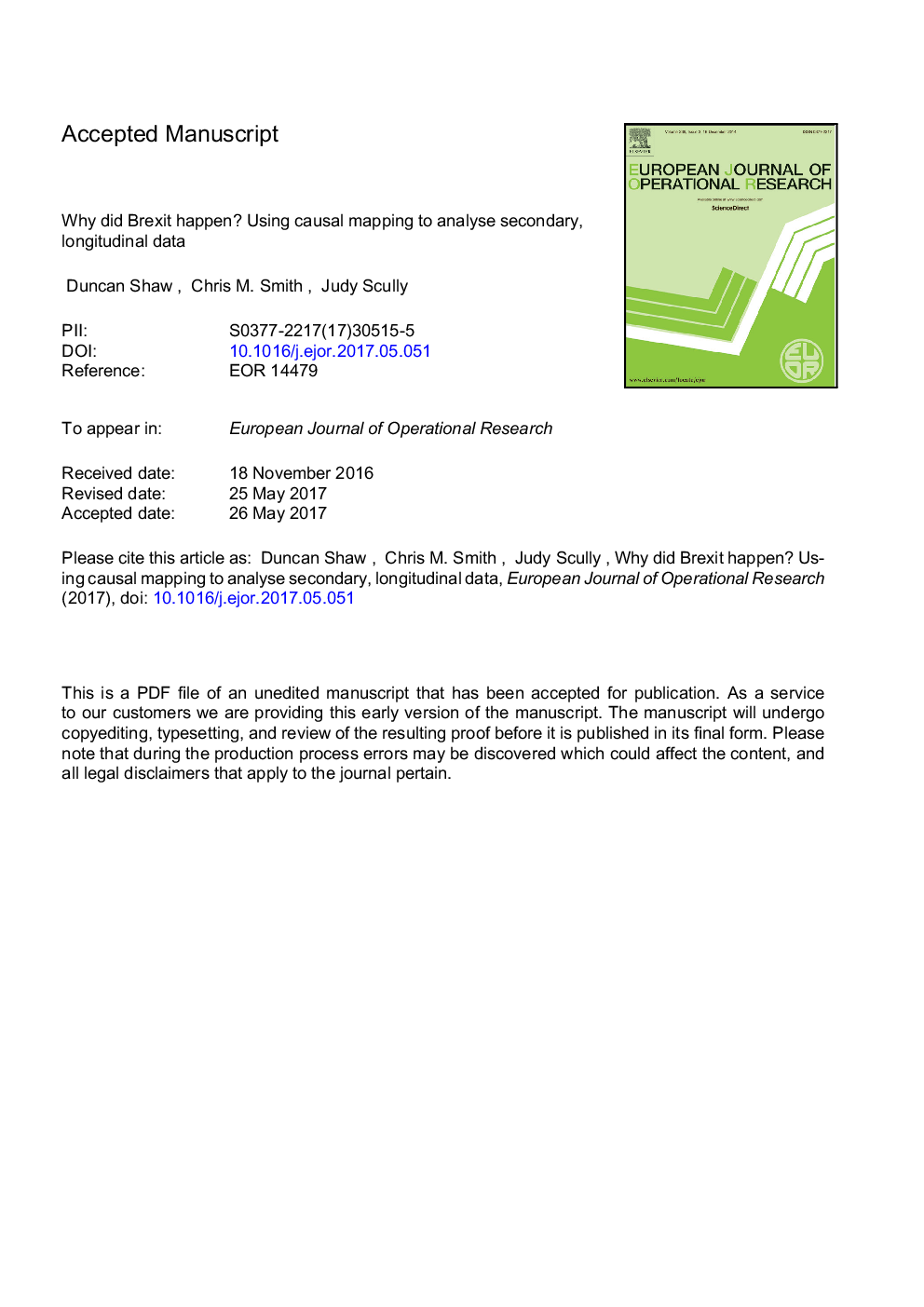| Article ID | Journal | Published Year | Pages | File Type |
|---|---|---|---|---|
| 4959357 | European Journal of Operational Research | 2017 | 39 Pages |
Abstract
The outcome of the UK's referendum on whether the UK should leave or remain in the European Union (so-called Brexit) came as a jolt to many across Europe. In this paper, we use causal mapping from soft OR to analyse longitudinal data from nine televised Brexit debates spread across the 4 weeks leading up to the referendum. We analyse these causal maps to build one view on why Brexit happened. The maps are analysed for the breadth, depth and consistency of arguments in the debate and, broadly, finds that the Leave campaign focused more consistently on a smaller set of campaign themes, contributed more detail to those themes, and focused on their own core issues rather than being diverted onto Remain strongholds. In contrast, Remain shared more information but across a broader range of themes (meaning they were less consistent), and followed Leave into themes that were clearly not their core battleground. The novelties for soft OR in this paper include: the difficulties of building and validating causal maps from secondary data; new techniques for analysing a group of causal maps to uncover the properties of arguments that spread longitudinally through a campaign; a methodology for a teaching case using publicly availability data; linking the paper, philosophically, to critical realism given the unique dataset. Finally, we identify differences in the Leave and Remain debate campaigns to offer one answer to the question 'Why did Brexit happen?'
Related Topics
Physical Sciences and Engineering
Computer Science
Computer Science (General)
Authors
Duncan Shaw, Chris M. Smith, Judy Scully,
